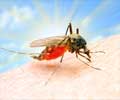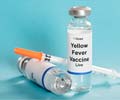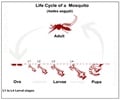High temperatures, humidity and low wind speed are linked to high occurrence of dengue fever, a new study has found.
Published in the open access journal BMC Public Health, the study's lead researcher Qiyong Liu of the State Key Laboratory for Infectious Disease Prevention and Control, and China CDC, and Linwei Tian of the Stanley Ho Centre for Emerging Infectious Diseases, School of Public Health and Primary Care, Chinese University of Hong Kong, correlated weather conditions, including minimum and maximum temperature, wind velocity, humidity and rainfall with the number of cases of dengue fever in the city of Guangzhou, capital city of Guangdong Province, China, over a six year period from 2001 until 2006.As dengue fever is a legally notifiable disease in China, the researchers were able to retrieve the monthly incidence of dengue fever from the Notifiable Infectious Disease Report System in the China Centre for Disease Control and Prevention. They correlated this with monthly weather data obtained from the China Meteorological Data Sharing Service System over the same period of time.
Higher minimum temperatures and lower wind speeds were associated with the highest number of cases of dengue fever. If the effects of humidity were factored into the mathematical model, the model fit actual events even better.
The effects of minimum temperature and humidity on the incidence of dengue fever were subject to a lag of about one month, whereas the effects of wind velocity were apparent in the same month.
The authors suggest that the effects of humidity and temperature are likely to be related to mosquito survival; low humidity and cooler temperatures decrease mosquito survival.
Wind speed affects mosquito flying, so high wind velocities lead to lower density of mosquitoes. But the authors point out "the transmission of dengue fever is more complex, and is influenced by community intervention measures, human behavioural influences on mosquito population and human mosquito interaction," and conclude, "future studies require studying mosquito populations."
Advertisement
LIN













